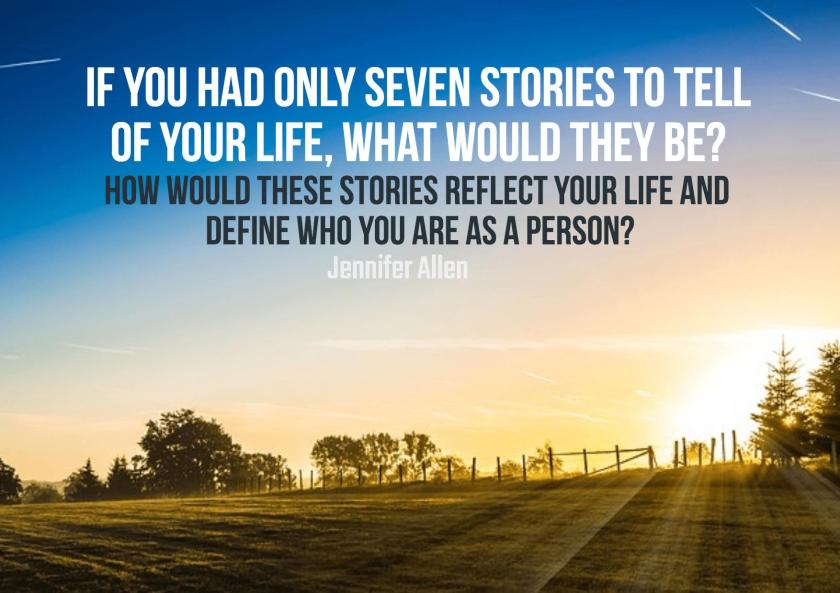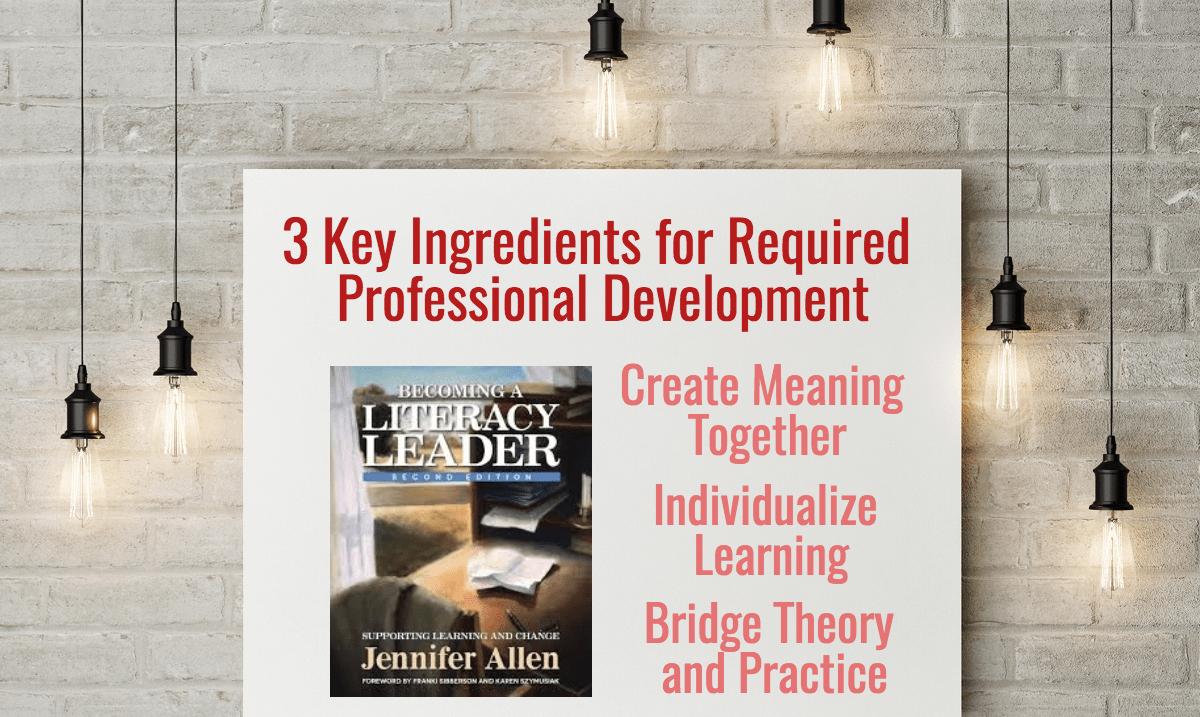As teachers, we have all had times when we have been asked to participate in mandated professional learning. Before you read on, think about the last time you found yourself in this situation. How did you feel about being there? What elements worked for you and what rubbed you the wrong way?
For me, this type of learning reminds me of what our students must feel each day. I admit that I myself have not always been a huge fan of mandated professional development. It is ironic that planning and delivering this type of learning is now a regular part of my current position. Knowing that the feelings around this type of PD are not always talked about in a positive light, I was intrigued to read Chapter 3: “A Model for Required Professional Development” in Jennifer Allen’s book Becoming a Literacy Leader. I was genuinely curious to find out what might Jennifer offer to help me become a better facilitator for required learning sessions.
Right away I loved Jennifer’s honesty as she shared her moments of success and frustration. Anyone who has organized and led professional learning has had those moments where you clearly know you have failed. Jennifer begins with sharing some very challenging years that were not working for her. Paying attention to our mistakes and learning from them is important for all of us, regardless of our teaching context.
I began to think about my biggest fails from this past year. What did I learn? Probably the most important lesson I learned this year was to invest the time to learn the culture of the group. Not all groups work the same way and not all leaders want you to work with their staff in the same way. Asking questions and ensuring expectations are clear, helps things go more smoothly. Many times I am asked to introduce ideas and information that may challenge entrenched ways of thinking and working within schools. Another lesson I learned is to name this dissonance right at the beginning and open up space to disagree, in agreeable ways. My biggest learning continues to come from reflecting about the bumps in the road and what I could do differently next time.
In Chapter 3, Jennifer introduces us to three key ingredients she believes are essential when designing an agenda for mandatory professional development:
- making meaning of content together
- individualizing the learning
- bridging theory and practice.
I loved her example of “My Life in Seven Stories”, but equally was a fan that she left room for me to contextualize these ideas and make them my own. When I thought about the three ingredients for professional development, I was able to immediately connect my own personal experiences with her framing.
Thinking about how groups can make meaning of new content together, I realized how important good questions are for learning. Thinking in questions helps organize the main ideas and guide professional development but also leaves room for the learners to influence the direction and thus the learning. Framing professional learning through a series of questions signals to the participants that they will be actively making meaning together. Knowledge Building Circles are a great way to dig deep into important questions and make meaning of content together.
The second ingredient Jennifer suggests is to design professional learning so people can individualize the learning. This can be tough with very large groups but by providing choice within the session, we can increase autonomy and engagement. Choice can be as simple as offering a collection of articles to choose from, a variety of tools to use, or even providing the opportunity for groups to make micro-decisions about how to structure a block of time. Jennifer’s suggestion to take what you learn and apply it yourself (p.54), reminded me that we want our learners to be actively engaged in doing the learning and not just hearing about the learning. If your session is about reading, ask your participants to read. Taking off the teacher hat and putting on the learner cap is important for internalizing and personalizing learning.
The third ingredient was a recent epiphany for me. I used to wonder why we even needed theory. Just tell me what to do! Now I understand that theory helps us understand the ‘why’ behind our choices. Jennifer suggests that the bridge between theory and practice can happen by giving teachers time to play with the strategies in the classroom (p. 54). I think an important part of this ingredient is also to scaffold teachers to be able to name and understand what theory might look like in their classrooms before they leave the professional development session. Embedded planning time to bridge theory and practice during professional development has become a regular fixture in my planning. A handy protocol for this is ‘Connect. Extend. Try’. At the end of PD sessions, I ask participants to think about how the new learning connects with what they already know, what extends or challenges their thinking, and what is one new thing they will commit to trying.
Having only finished Chapter 3 of this book, I am excited to continue reading to discover more practical and inspirational ideas about leading literacy. I know I will for sure be stealing Jennifer’s “My Life in Seven Stories” to use at some point with teacher writing groups this year!

Please consider adding your ideas about key ingredients or some ‘tried and true’ ideas for professional learning in the comments. I’d also like to invite you to join our reading community as we read and discuss Becoming a Literacy Leader together.
Thanks for reading,
Heather


